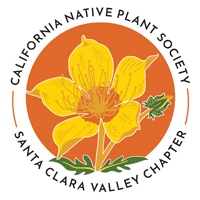Grow Wildflowers!
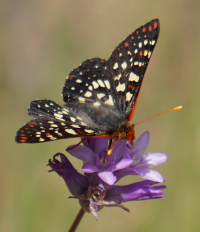 CNPS Santa Clara Valley Chapter is promoting biodiversiity by giving free wildflower seeds to native plant gardeners in our chapter area (Santa Clara and San Mateo counties) to re-energize the ecosystem in their home gardens. Together, we can bring back butterflies, bees, and birds. Find our Wildflower Ambassadors at events to receive free seeds.
CNPS Santa Clara Valley Chapter is promoting biodiversiity by giving free wildflower seeds to native plant gardeners in our chapter area (Santa Clara and San Mateo counties) to re-energize the ecosystem in their home gardens. Together, we can bring back butterflies, bees, and birds. Find our Wildflower Ambassadors at events to receive free seeds.
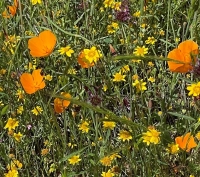 Each seed packet you receive from us contains California native wildflowers in rich hues of gold, orange, pink, purple and blue that will cover three to four square feet or several large pots. You can scatter these seeds in an area planted with native grasses for a meadow effect.
Each seed packet you receive from us contains California native wildflowers in rich hues of gold, orange, pink, purple and blue that will cover three to four square feet or several large pots. You can scatter these seeds in an area planted with native grasses for a meadow effect.
Scattering a packet of native wildflower seeds is a joyful way to restore lost essential habitat while enhancing your gardening experience. We hope you revel in the beauty of the flowers, colorful caterpillars, variety of pollinators, baby birds, and the dance of life in your garden.
Planting Instructions
- Choose a site in full sun to partial shade.
- Prepare your soil by removing all existing growth and debris. If your soil is clay, break it up with some compost or cactus mix (sold at nurseries).
- Scatter your seeds over the prepared area. For more even coverage, you can mix your seeds with a little sand before scattering them.
- Water thoroughly to help seeds settle into the soil. Continue to water a few times a week, unless it rains, so they don’t dry out after germinating. Seeds should sprout in one to three weeks.
- After your plants are several inches tall, let the area ‘go natural’ by leaving the leaf litter on the ground. While many butterflies go into chrysalis on stems or other hard surfaces like branches, many others go into chrysalis in the debris. If you rake or blow it, you could accidentally kill or throw them away.
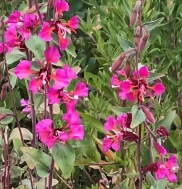 The beauty, color, and scent of flowers bring us joy. However, it's crucial to remember that for bees, butterflies, and birds, flowers serve as a vital source of nourishment for their survival. Plants and flowers provide bees with pollen, butterflies and moths with nectar, and caterpillars with essential food in the form of leaves. Butterflies, for instance, sip nectar from various flowers but lay their eggs exclusively on certain host plants that will nourish their offspring. The Variable Checkerspot, Silvery Blue, and other butterflies and moths depend on these plants as a food source for their caterpillars. In turn, these caterpillars play a crucial role in the survival of local birds, as 96% of the birds that visit your yard rely on caterpillars to feed their young. To learn more about this fascinating relationship, consider reading Nature's Best Hope by Doug Tallamy or watching this video. Share this information with your friends and neighbors. Some neighborhoods are even creating "butterfly corridors" by planting patches of wildflowers and native plants in their gardens. So, take a moment to appreciate the beauty and importance of flowers in our ecosystem.
The beauty, color, and scent of flowers bring us joy. However, it's crucial to remember that for bees, butterflies, and birds, flowers serve as a vital source of nourishment for their survival. Plants and flowers provide bees with pollen, butterflies and moths with nectar, and caterpillars with essential food in the form of leaves. Butterflies, for instance, sip nectar from various flowers but lay their eggs exclusively on certain host plants that will nourish their offspring. The Variable Checkerspot, Silvery Blue, and other butterflies and moths depend on these plants as a food source for their caterpillars. In turn, these caterpillars play a crucial role in the survival of local birds, as 96% of the birds that visit your yard rely on caterpillars to feed their young. To learn more about this fascinating relationship, consider reading Nature's Best Hope by Doug Tallamy or watching this video. Share this information with your friends and neighbors. Some neighborhoods are even creating "butterfly corridors" by planting patches of wildflowers and native plants in their gardens. So, take a moment to appreciate the beauty and importance of flowers in our ecosystem.
Want more seeds? Check our list of places to buy native seeds.
Contact us with questions at: This email address is being protected from spambots. You need JavaScript enabled to view it.
Resources for Gardeners
The California Native Plant Society (CNPS) is a science-based organization founded in 1965 with a mission to conserve California native plants and their natural habitats, and increase understanding, appreciation, and horticultural use of native plants. The Santa Clara Valley chapter covers Santa Clara County and southern San Mateo County. Check out the great resources on our website and the numerous talks on native plant gardening and native plant science on our YouTube channel. We also have chapter fieldtrips, online plant sales, and other exciting events like our annual Growing Natives Garden tour. The CNPS state website also has excellent resources and information to get you started with native plant science or gardening.
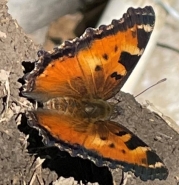 Want to find more California Native plants specific to your area, and the butterflies that use them as host plants? Then check out the wonderful CNPS Calscape website, which includes descriptions and planting information about every California native plant and links to native plant nurseries all over the state. For a user guide to using this amazing resource, watch this talk.
Want to find more California Native plants specific to your area, and the butterflies that use them as host plants? Then check out the wonderful CNPS Calscape website, which includes descriptions and planting information about every California native plant and links to native plant nurseries all over the state. For a user guide to using this amazing resource, watch this talk.
Discover flora and fauna in your region and across the globe, and even post your own observations on the iNaturalist app.
Seek answers to questions:
Why should we grow native plants to save birds and butterflies? Listen to Susan Karasoff here.
How can you restore nature in your garden? Dennis Mudd shares his insights
Where can you find more information about pollinator plants? Juanita Salisbury is an expert who talks about this.
When should you plant, water, prune, or leave things alone? Helen Popper shares a month-by-month guide for California gardeners.
What planting methods and soil will ensure success? Haven Kiers from UC Davis shares some research.
Need Plants? Find nurseries and plant sales using our list.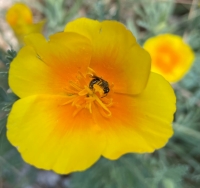
Seeking a few more butterfly resources? The Xerces Society is a great resource as well as the Bay Area Wildlife resource website.
Looking for a list of great books for gardening with native plants and ifor wildlife? Go to our resource page for books.
Need help getting started with a native plant garden? Tips are available in this video
Want to see most of California’s native habitats in one location? Check out the Regional Botanic Garden in Tilden Park.
Here is a list of public gardens with native plants.
Field Trip! Chapter field trips are listed here or on our Meetup page.
Contact us with questions at: This email address is being protected from spambots. You need JavaScript enabled to view it.
